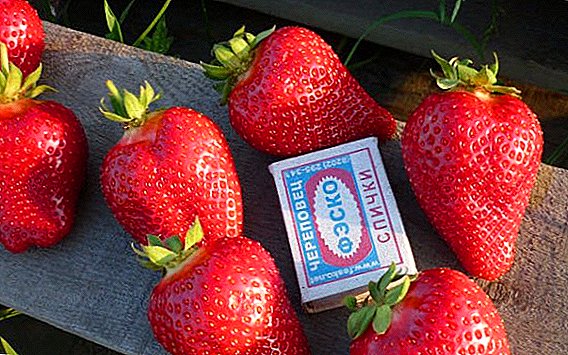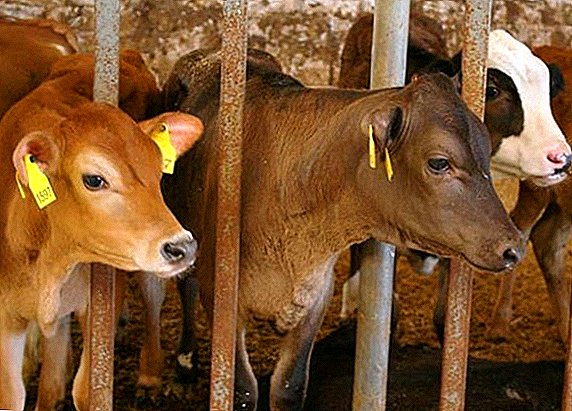 Wanting to acquire healthy livestock, the buyer wants to get as much information about animals as possible. One of the most important indicators confirming the quality of the product is the weight of the horned cattle, since it has a direct bearing on the health status of the cow, bull or calf, and in the future will affect their productivity and meat yield.
Wanting to acquire healthy livestock, the buyer wants to get as much information about animals as possible. One of the most important indicators confirming the quality of the product is the weight of the horned cattle, since it has a direct bearing on the health status of the cow, bull or calf, and in the future will affect their productivity and meat yield.
Average weight
The weight of cattle (cattle) carries a lot of information for representatives of animal husbandry. So, knowing the body weight of an animal, it can be said about its physical condition, as well as its growth and development.  Data on how much a burenka or a bull weighs is necessary for calculating and preparing a diet, vaccination doses.
Data on how much a burenka or a bull weighs is necessary for calculating and preparing a diet, vaccination doses.
Did you know? The intestine of a cow is 30% of its weight.
The standard weight of cattle is affected by it.:
- age;
- breed;
- floor.
In animal husbandry, it is customary to distinguish the following cattle mass categories:
- selective - weight is in the range of 450-500 kg;
- first grade - weight up to 450 kg;
- second grade - the weight of the cattle is within 400 kg;
- third grade - 300 kg.
If the average mass index of an animal is significantly different with an allowable error of 30 kg for an adult individual, this may indicate a wrong diet and diet, and the presence of diseases.
Bull
The average weight of a bull should be one and a half times the mass of a cow, which is approximately 700-800 kg, while in an adult bull of a large meat breed, this indicator can reach a ton and even exceed this value, amounting to 1200 kg.  Cows
Cows
An average heifer can weigh about 350 kg, but not less, if it does not apply to small-sized rocks.
Meat cows can weigh 700 kg, if they are more than two years old and they were kept in good conditions.
Check out these breeds of cows: Simmental, Dutch, Holstein, Ayrshire, Jersey, Aberdeen-Angus, Black-and-White, Red Steppe, Kalmyk, Kakhakh, Highland, Yaroslavl, Brown Latvian, Shorthorn and Holmogory.
Calf
At birth, the calf weight should be slightly less than 10% of the mother's body weight, which is on average 40 kg. It can vary and depend on the weight and breed of the baby's parents.
Calves are growing rapidly; they, like newborn babies, should be weighed regularly in order to understand how much they gain, whether everything is in order with health and whether there is a need to introduce changes in the diet of the young bull or cow.  At the age of 1 month, the calf's weight should increase by at least 10 kg, on average, they gain about 30 kg, that is, they double their birth rates. At the age of six months, it is transferred to adult food, and less often, but always once a month, they measure weight.
At the age of 1 month, the calf's weight should increase by at least 10 kg, on average, they gain about 30 kg, that is, they double their birth rates. At the age of six months, it is transferred to adult food, and less often, but always once a month, they measure weight.
How does cattle weight vary depending on the breed
Specialists involved in breeding cattle and its selection, allocate about a thousand breeds of cows around the world. However, all of them are divided into three main types, based on their purpose in the economy:
- dairy;
- meat;
- meat and dairy.
Dairy
A distinctive feature of dairy cow products can be called:
- high fat milk;
- less nutritious meat.
Among the domestic cattle of this species the most popular breeds in our region are:
- Red steppe. In weight, a cow can reach 400-500 kg, and as for gobies, they are all 900 kg;
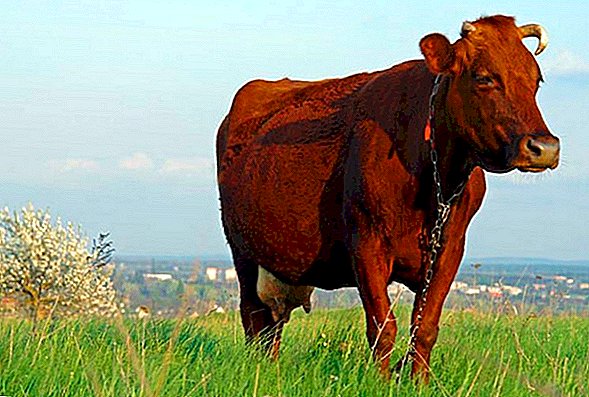
- Black and white. On average, it draws half a ton, and bulls - 800 kg;
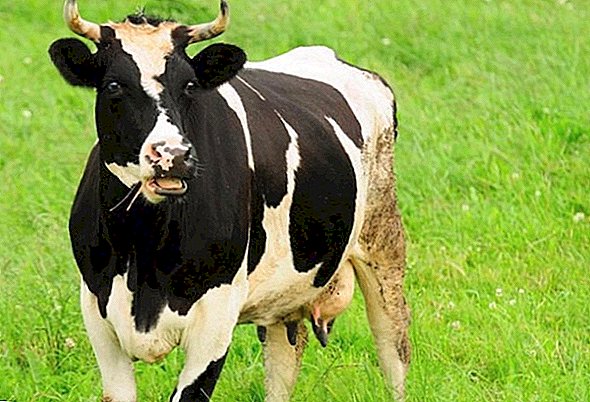
- Kholmogorskaya. The average mass of the cow will be 500 kg, but representatives of this breed can hang all 800 kg;
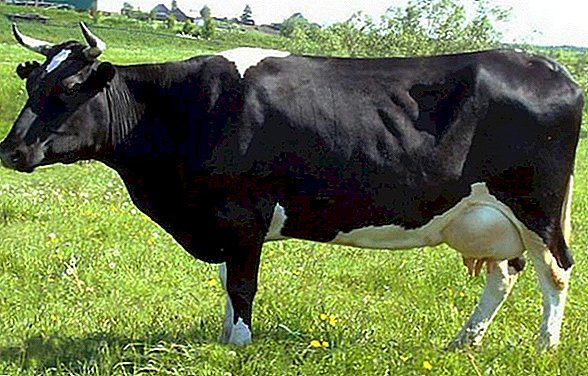
- Golshtinsky. It is characterized by an impressive size of livestock, since a cow of this breed has a mass of 650 kg, while a bull can gain a mass of up to 1200 kg.
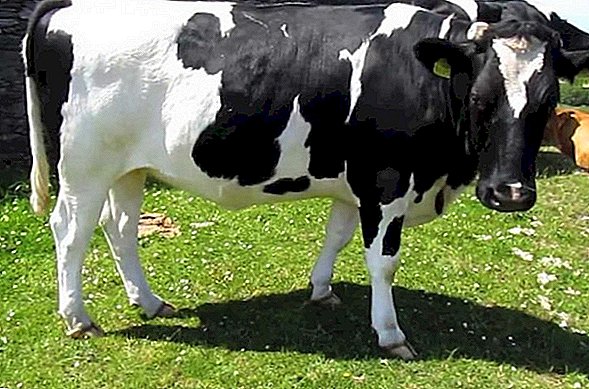
Breeding cattle livestock is associated with the risk of developing diseases such as ketosis, cysticercosis, leukemia, mastitis, udder edema, pasteurellosis, foot and mouth disease, or hoof disease.
Meat
Characterizing the cattle of this species, you can call such distinctive features as:
- quick weight gain;
- higher quality meat due to the special development of muscles;
- more refined taste.
- Hereford. An adult cow can be 500-600 kg of weight, and a bull - 800-1100 g. Meat yield - 53-65%, less often 70%;

- Aberdeen-Angus breed. The cows also gain 500-600 kg of weight, and the bulls are a little less - about 800 kg. Output of products - 60%;

- Sharolez breed. An adult bull is gaining 1,200 kg, and a heifer - 800 kg, despite the fact that they have a lot of meat and not very fat, as well as a large yield of meat products;

- Ukrainian meat. Extremely unpretentious in the diet, because they eat any vegetation, while reaching in the 16 months of 550 kg. In addition, the skin of cattle of this breed is used in the manufacture of footwear;
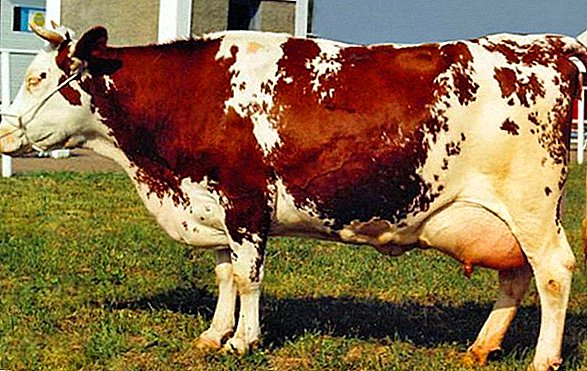
- Znamenovskaya. It has more miniature forms, since a cow of this breed will weigh a maximum of 550 kg, and a bull - 700 kg. Leather is also used to make shoes, bags.
Meat and Dairy
Representatives of this species have a strong body and are used universally both for milk production and for meat products.
They produce more meat than dairy, and more milk than meat. The average weight - in the range of 550-900 kg, depending on the floor.
Did you know? Cows on average live for twenty years, although there are long-livers. Bulls live less than fifteen years.
KRG's meat and dairy breeds, which are popular among livestock breeders, are:
- Brown Carpathian;
- Lebedinskaya;
- Alatau;
- Krasnaya Gorbatovskaya;
- Yurinskaya;
- Schwycki;
- Red Tambov;
- Yorkshire;
- Caucasian brown;
- Simmental
 Simmental
SimmentalWhat determines the weight of cattle
The weight of livestock is directly dependent on the conditions of its maintenance, as well as on the food provided by the livestock breeder. There are also recommendations for breeding and care, depending on the breed and types of cows.
So, for example, meat species cows are not required and even to a certain extent, long and exhausting grazing is contraindicated, since they can lose their own weight. They are advised to grow in a stall.
But dairy cows are recommended long walks in the pasture with the ability to breathe fresh herbal air.
Important! The environment, diet and diet, climate and conditions in the complex affect the health and weight gain of domestic cattle.
Conditions of detention
When organizing a barn for breeding cattle, the importance of such aspects as:
- temperature conditions. Indoors should not be cooler + 10 ° C, if it is not cold keeping, for adult cattle and +15 ° C for calves;
- humidity in the room;
- good lighting;
- gas saturation;
- no noise, calm atmosphere.
It is worth taking care of pasture. Its use makes the process of breeding less expensive, while the cow's body can fully develop, its movements are not constrained, it breathes fresh air, basks in the sun. The most beneficial impact of walking on pasture is for dairy and meat-dairy cows. 
Feeding animals
Properly organized feeding should be of high quality. It includes:
- vegetable food: succulent (grass, silage, root crops), coarse (hay, straw), concentrated (technical waste, grain);
- animals;
- chemical and microbiological synthesis;
- feed and feed mixtures;
- vitamin and mineral supplements.
Important! Forage from sunflower, flax and cotton cake increase the amount of dairy products, and poppy, hemp and rapeseed vice versa.
Champions cows: maximum and minimum weight
What animal breeder refuses to boast the achievements of their labors? There are large and very massive breeds of cattle, however, among these representatives of the animal world there are giants.
Bulls:
- The largest representative of the KRG is considered to be Donnetto.who lived in Switzerland in the XX century. His weight - 1740 kg, and height at the withers - 190 cm. He was a Porcelain breed.
- To date, no less titanium lives in England. He breeds Charolais and his name is Field Marshal. Its mass is 1700 kg, and it was 190 cm tall.
- Another giant was named Chile, residing in Fern (Britain). It belongs to the Freesian breed, derived from Porcelain. Its weight is 1300 kg
- Trigger freesian breed also weighs less than 1,200 kg and has a height of 196 cm, and its length is striking, it is 4.3 m.

Familiarize yourself with the most well-known types of beef breeds for fattening.
Cows:
- Permanent record holder is burenka, who lived at the beginning of the XX century. Her data is entered in the Guinness Book of Records, and it is unlikely ever she will find a rival, because her weight was 2,270 kg. Her name was Mount Katadin, she was a hybrid of the Holstein-Durhmanian breed. She was 3.96 m in girth and 188 cm at the withers.
- The current owner of the title "giant" is the Big Cow Chilli. It is more than a ton in weight and 183 cm tall.











